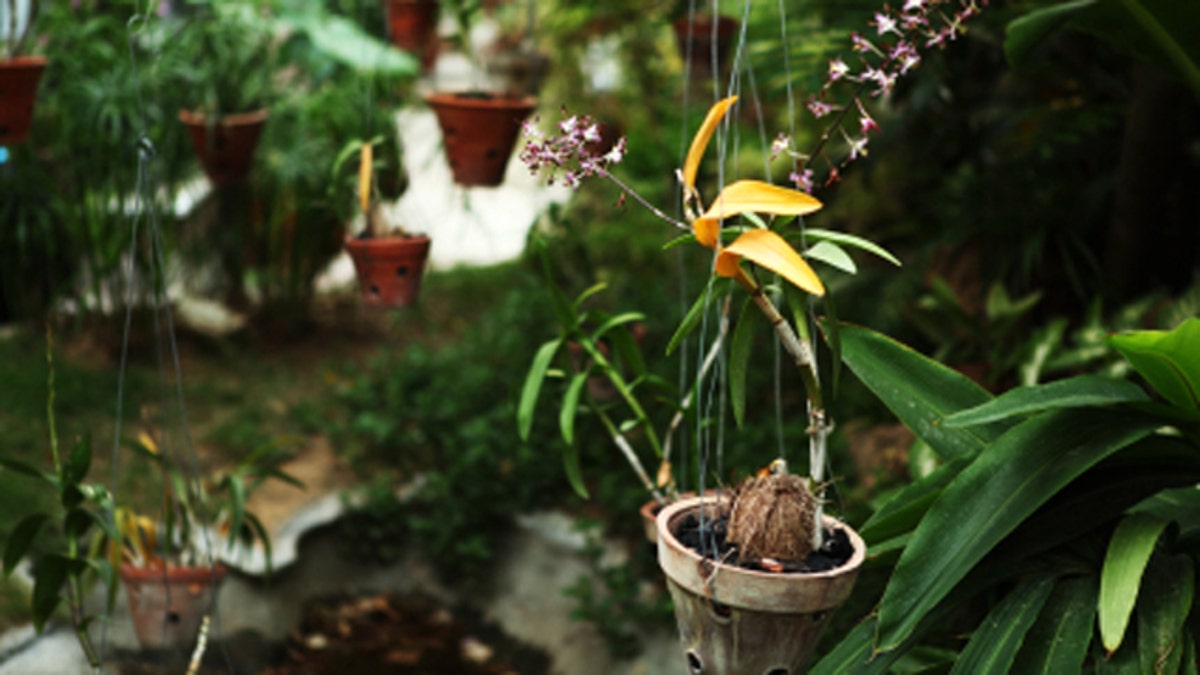
For those with small yards, or no yards at all, a verdant, thriving garden can seem like an impossibility. But more and more people are looking upward to solve the problem of limited land. Vertical gardening, the art of growing skyward, has become an increasingly popular trend.
Popularized by people like botanist Patrick Blanc — who is responsible for some of the movement’s most stunning and intricate examples of vertical green space — these hanging gardens give hope to the landless, allowing them to dream of their own patch of wall-bound paradise. While Blanc’s work is certainly ambitious, it can also be a little beyond the abilities of the average gardener. However, a more modest approach to vertical gardening is possible and not too difficult. So if you’ve got limited land to work with, check out some of these great ideas to transform wall space into green space.
Window Boxes
The window box is the most common way to elevate a garden. Secured with a couple of metal brackets, these long, slim planters can be fixed beneath a window or attached to the railing of a balcony or porch. One of the most flexible options for those with limited space, window boxes are ideal for setting up a flower garden or growing culinary herbs — really any plants that don’t need to set down deep roots.
Woolly Pocket
Featuring a soft, felt fabric made from recycled plastic bottles, Woolly Pockets are a simple way to turn a wall into a garden. The backside of the pockets feature a watertight barrier, which the company promises will keep your walls dry. The material on the front is breathable, allowing water to exit and oxygen to enter, keeping your plants happy and healthy. Because they are modular, you can add a pocket at a time, or swap pockets to rearrange the look of your hanging garden. Best of all, the pockets can be used both inside and outdoors, so it’s a great option for apartment dwellers that lack even an exterior wall.
Terrariums
These clear glass spheres were all the rage in the 1970s and are making a comeback in the gardening world. Available in a number of interesting and unusual shapes, these glass planters can be hung from the ceiling to show off a miniature ecosystem. By trapping in humidity, terrariums keep plants from drying out, making them a perfect option for those looking for a hassle-free garden. A terrarium is best suited for hardy succulents, cacti or air plants, and you can add a few decorative touches to them too, like colored pebbles, twigs, sand or dyed reindeer moss.
Air Plants
Air plants are true freaks of nature. Lacking a root system, these plants pluck dust and debris from the air and use it as their soil. Because they don’t need to be planted in a growing medium, you can stick one of these hardy plants just about anywhere — in a terrarium, grown upside down in a hanging ceramic planter, or even glued to the wall with a special plant-safe adhesive.
Vines
Vining plants love to creep up walls, fences and any other vertical space you’ve got, so they are a great addition to the yard if you don’t have much of a yard to speak of. Edibles like peas, tomatoes and cucumbers are particularly easy to grow. Just sow along a chain-link fence, or slap together a simple trellis system and you’ll have a bounty of vegetables by mid-summer.
Hanging Tomatoes
Apartment dwellers with a hankering for fresh, summer-ripe tomatoes have long had to make their way to a farmers market for a taste of this ultimate summer fruit. The Topsy Turvy Tomato Planter promises to give the space-bereft a chance to grow their own by literally turning the growing process on its head.
If you’d rather make your own upside-down garden, it’s not difficult. A few hanging planters with holes cut in the bottom is all you need — that and a little patience.
Vertical Planters
Like the Woolly Pocket, a vertical planter transforms fence space into green space. But whereas the Woolly Pocket uses a soft fabric, a vertical planter uses a system of angled plastic compartments that hold the plants in place, while allowing water to filter down through your greenery. The drainage on these systems isn’t spectacular, so they are best suited for plants that prefer drier climates, like succulents.